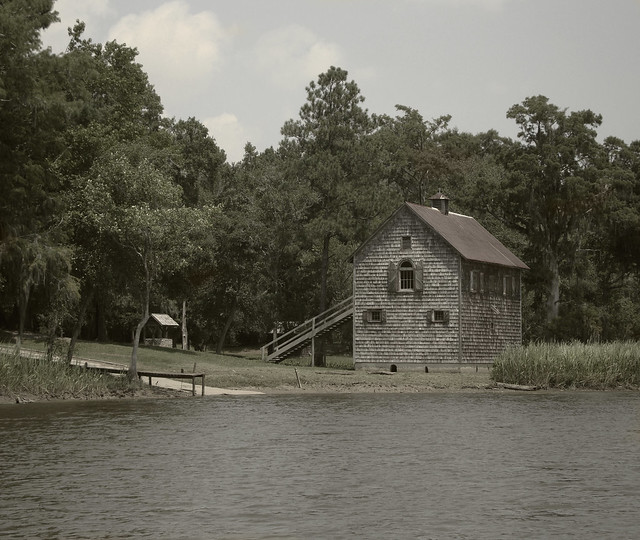A Tour de Force
In the spring of 1776, the British planners in London aimed to turn their recent stalemate and embarrassing withdrawal from Boston into a strategic victory that would end the rebellion that year. One fleet was ready to strike the crucial port of New York with a direct attack, while another planned a quick left hook at the equally important port of Charleston. The latter strike was to come first, setting the stage for a more decisive blow in the middle Atlantic colonies. Charleston, the major southern city at the time, had vital connections to the key islands in the West Indies, which were always a top priority for British interests. Dominated by a planter class, South Carolina wasn't seen as a heavily rebel area that would fall easily. However, a few brave patriots proved them wrong.
A Last-Minute Plan
 |
| Lord Dartmouth |
A City Prepares
 |
| Charleston's waters were treacherous as the British would soon discover |
But the South Carolinians in Charleston had long anticipated that they would be a target of the British and eagerly built up defenses on Sullivan's Island. This was a three-sided fort with sixteen-foot-high sand walls surrounded by softwood palmetto logs. The spongy palmetto wood absorbed the impact of cannonballs—the main threat to the fort. The fort was armed with twenty-five guns of various sizes and calibers, and housed a garrison of over four hundred men. Most importantly, the commanding officer of Fort Sullivan was militia Colonel William Moultrie, who would soon prove to be one of the most capable fighting generals of the war. The city itself had a garrison of over six thousand troops, including Continental Line infantry. In command was Major General Charles Lee, a former British officer and widely regarded (especially by himself) as the finest officer in the American cause. Lee believed that Fort Sullivan was too exposed to the fire of British warships and ordered it to be abandoned. However, South Carolina Governor John Rutledge overruled Lee, viewing it as a necessary buffer against a naval attack. Geography and hydrography favored the defenders; the narrow harbor channel, with strong currents and shoals, troubled the British as they planned where to land and how to position their ships. It took a month before they were ready to attack the city that was just within their reach.
 |
| Colonel William Moultrie's militia staged a gallant defense |
Bombs Bursting in Air... Sand.. and Wood
 |
| The South Carolina flag hoisted in battle boosts morale |
On 28 June, a bombardment commenced between Parker's warships aligned off Sullivan Island and Moultrie's raw militia manning the guns protected by sand and palmetto logs. The barrage went on for hours. The British gunners were frustrated that, despite hit after hit, the combination of sand and spongy logs inflicted little damage on the fort. Shot after shot from the warships either bounced off the walls or got absorbed into the soft walls of the palmetto. The Americans fired back. But low on gunpowder, Moultrie insisted that each shot be well-aimed. In the middle of the hours-long engagement, a British shot cut down the South Carolina flag. A brave sergeant named William Jasper, in full view of the British and the Americans, ignored the hail of lead and iron to mount the parapet and restore the flag. The impact on the morale of both sides was telling. As the battle continued, the defenders' deliberate fire took its toll on the British ships, scoring hit after hit. Things took a final turn against the British when Parker sent three frigates around Sullivan Island to take the defenders in the flank. Unaware of the dangerous waters of the channel, all three suddenly grounded in the shallows. After a struggle, the two freed themselves, but the third, HMS Acteon, remained stuck. The frustrated crew burned it to prevent the rebels from taking it.
 |
| The savage naval bombardment was decided by shoals, sand, and wood |
Fight on till Dark
 |
| Commodore Parker |
The Result
The British armada returned to New York at the end of July with ships damaged and sailors and soldiers discouraged. However, they soon had a chance for some revenge when the British launched their massive attack on Long Island in late August. Still, the victory at Fort Sullivan kept the South safe for four crucial years. It introduced the world to a brave new leader and boosted morale across the Carolinas and the entire rebellion. And in honor of the palmetto’s role in the victory, the noble tree with soft bark was added to the South Carolina state flag, where it remains today.
 |
| South Carolina State Flag |


